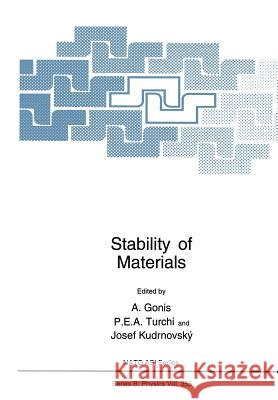Stability of Materials » książka
Stability of Materials
ISBN-13: 9781461380283 / Angielski / Miękka / 2011 / 742 str.
Engineering materials with desirable physical and technological properties requires understanding and predictive capability of materials behavior under varying external conditions, such as temperature and pressure. This immediately brings one face to face with the fundamental difficulty of establishing a connection between materials behavior at a microscopic level, where understanding is to be sought, and macroscopic behavior which needs to be predicted. Bridging the corresponding gap in length scales that separates the ends of this spectrum has been a goal intensely pursued by theoretical physicists, experimentalists, and metallurgists alike. Traditionally, the search for methods to bridge the length scale gap and to gain the needed predictive capability of materials properties has been conducted largely on a trial and error basis, guided by the skill of the metallurgist, large volumes of experimental data, and often ad hoc semi phenomenological models. This situation has persisted almost to this day, and it is only recently that significant changes have begun to take place. These changes have been brought about by a number of developments, some of long standing, others of more recent vintage.











